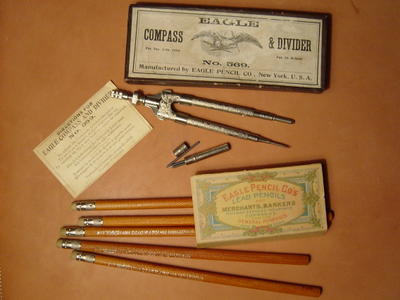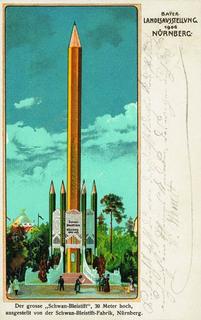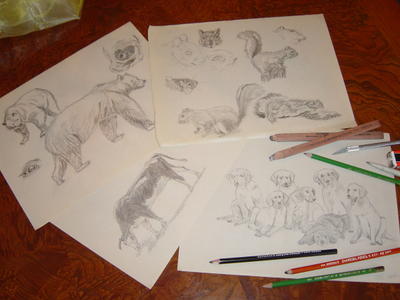 The following is the first of a series of Timberlines articles to be posted in the coming weeks discussing the impact various world trade issues and practices have upon the Pencil Industry.
The following is the first of a series of Timberlines articles to be posted in the coming weeks discussing the impact various world trade issues and practices have upon the Pencil Industry.
Import and export duties, value added taxes, export credits or export VAT rebates, fixed currency exchange rates are all examples of factors that impact trade flows around the world. Such meddling with what “free market thinkers” would call free and unrestricted trade is a common practice from nation to nation. Certainly the World Trade Organization and other regional trading block agreements such as NAFTA, various EU agreements, APEC, ASEAN and MERCOSUR work to liberalize such trade barriers worldwide. However, there is clearly a level of relative national and regional competitive advantage to be gained when countries set their policies regarding these market influencing instruments. Often the duty policies of one or more countries for given products are set as retaliation for or to correct perceived unfair trade practices of another particular country.
The pencil industry is no exception to this situation and a number of these market “interventions” or “correction factors” (depending upon where you come out on the free trade scale) exist within our industry. Today’s topic of anti-dumping duties is just one such example. Currently, several countries worldwide have implemented incremental Anti-Dumping duties specifically placed upon imported Chinese pencils as a result of lobbying from local pencil manufacturer groups. These anti-dumping duties are imposed over and above any normal import duty pencils may be subject to. Among such countries with Anti-Dumping duties are the United States, Mexico and Turkey. I expect there may be some others of which I am not currently aware. For these three countries, anti-dumping duties range from just over 100% to over 400% of the invoice value of the pencils.
Here in the US the current country wide anti-dumping deposit rate for pencils exported from China to the USA is 114.9%. The importer of record is required to “deposit” funds into an escrow type account upon importation of the pencils. This rate is applicable to all imported Chinese pencils, unless a specific Chinese exporter/producer has gone through an administrative review process with the U.S. Department of Commerce (DOC) to have their company audited for a reduced rate. However, this is an expensive and very complicated audit process and as such not many Chinese companies pursue reduced dumping margin rates. Currently, four Chinese entities or combined manufacturer/export company groups (including our own subsidiary facility) have received reduced dumping deposit rates ranging from 0% (ours) to around 23%. In effect these companies have demonstrated that they are not dumping pencils or should not be at the China-wide rate for the most recently reviewed period. Under DOC rules the country wide rate is set by the highest rate determined for any given Chinese company that ever requested a review by DOC. As such the original rate of around 53% was increased to the current 114.9% level a few years back.
These reviews are conducted annually for a full year of shipments upon the request of the original plaintiffs, a group of US manufacturers. Should the DOC find during a review that the dumping deposit rate should be lower or higher for that period for a given Chinese exporter/producer then deposited funds are either refunded to the importer or additional funds are paid by the importer. As such the importer takes a certain risk when deciding to import from a Chinese supplier as the rate could increase and be left with the requirement to pay additional duties at a later date. Once the rate changes the new rate becomes effective for all future shipments. As it generally takes about 18-22 months to complete the review process and determine and clear the final figures remaining in deposited “escrow” fund, these risks are certainly increased for importers should the rate eventually increase.
Under a U.S. law named the Byrd Amendment, the final amounts in the cleared escrow fund are distributed to the original petitioner companies in the applicable industry. The relative refunds are again determined according to another complicated formula and calculation. In effect, the US pencil industry (and many other industries) is reimbursed for damages resulting from low priced imports that are deemed to have been sold at dumping prices. As such implementing anti-dumping duties has become a bit of a “growth industry” here in the US as more industry groups react to the incursion into the US market by Chinese and other foreign competitors. This is a controversial rule which has been deemed illegal by the WTO, but is fraught with obvious landmines for any politician in the US who would propose repeal of the Byrd Amendment.
Even with these high dumping deposit rates, most low end commodity pencils imported from China are cheaper than US produced products. This is demonstrated by the fact that Chinese pencils imports have continued to grow over the past 9 years that anti-dumping duties have been placed on pencils. Of course in our view you get what you pay for and there is no doubt that the average quality of pencils consumed in the US has declined over the past decade.
Clearly there are a number of market inefficiencies or inappropriate incentives created by implementation of high anti-dumping duties. The Byrd amendment policy previously mentioned. Also some Chinese companies attempt to avoid the dumping duties through the practices of transshipment via a third country not subject to the duties and/or by purposely mis-labeling the country of origin for the pencils. Both are illegal practices under international trade rules, but can be difficult to detect and requires domestic producers to be vigilant as to what’s going on in the market place given all the challenges our Customs and Homeland Security department face from other fronts these days.
So what are the current developments relative to US Anti-dumping duties for pencils that will or may impact our industry in the next several months or years? It turns out there are several important issues today and these will be covered in my next post on this subject entitled:
Pencil Anti-Dumping Duties: Are Changes in the Air?





 This post continues a series of Timberlines articles discussing the impact various world trade issues and practices have upon the Pencil Industry. In my previous
This post continues a series of Timberlines articles discussing the impact various world trade issues and practices have upon the Pencil Industry. In my previous 









 Other programs like the
Other programs like the